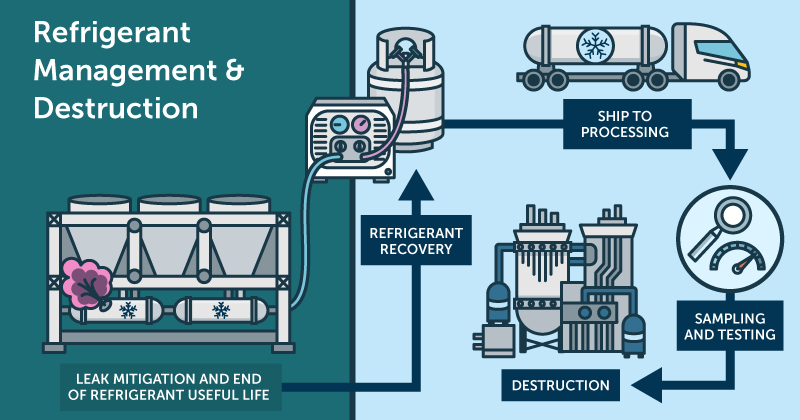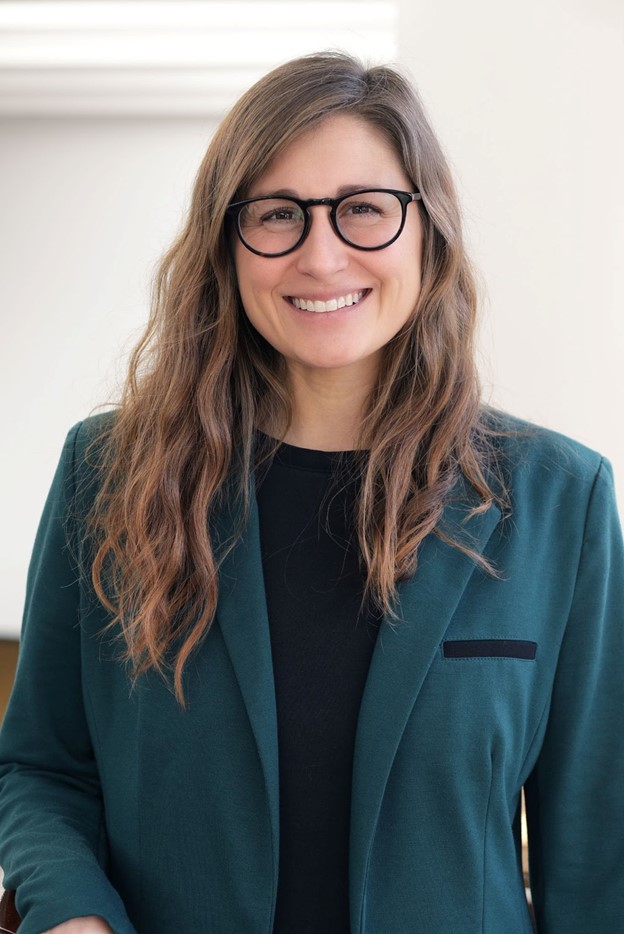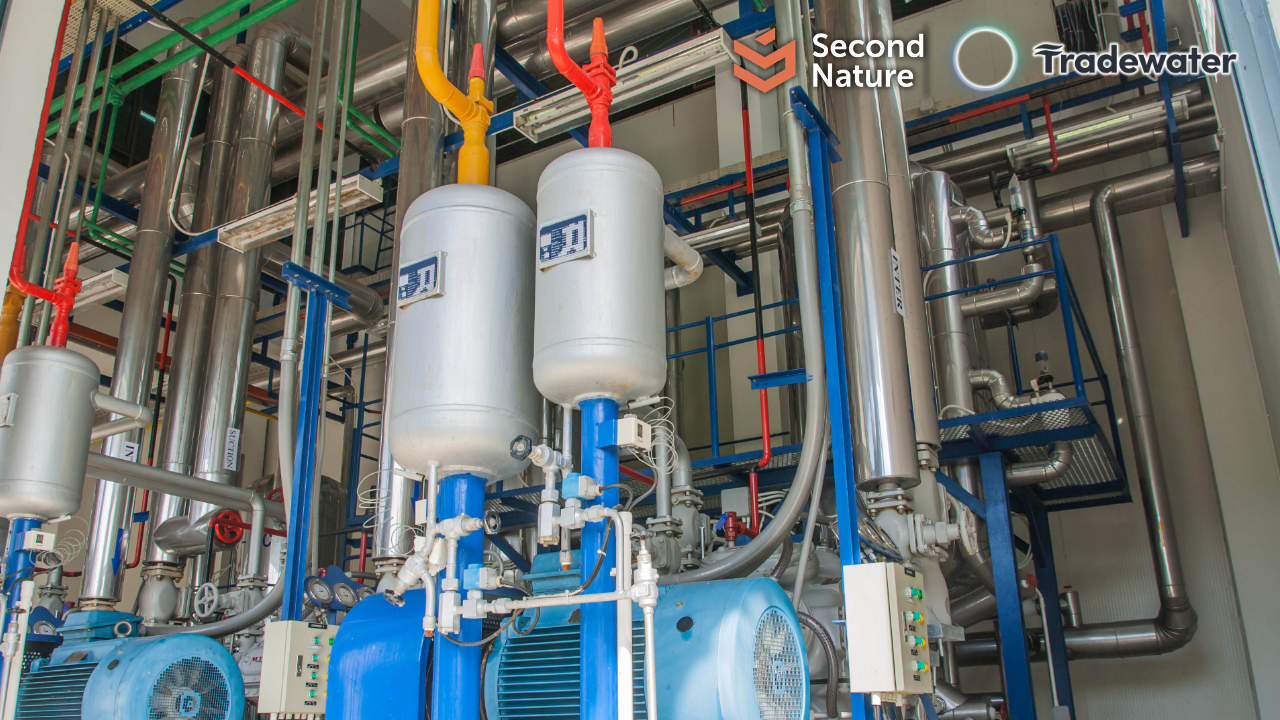Energy Efficiency, GHG Emissions - June 24, 2024 - By Bridget Flynn, Second Nature
Targeting 1 Million Tonnes of Impact
Did you know certain refrigerants have a global warming potential over 10,000 times that of CO2? Refrigerant emissions don’t get the fanfare that buildings and renewable energy generation do and yet they are one of Project Drawdown’s top emergency brake solutions for climate change.
I am a former campus sustainability officer who has worked on energy, transportation, education, waste, food, behavior change – an abundance of sustainability topics – and yet, refrigerant management is not a topic I’d heard much about in my education, training, or profession. I knew the relationship between refrigerants and Superfund sites, but I never made the jump to interrogate how many refrigerants were on my campus – and what the impact of destroying legacy refrigerants could be.
I now work with Second Nature, a non-profit organization that works to accelerate climate action in and through higher education. In the 2000s, Second Nature initiated the largest voluntary network for carbon reduction and disclosure. We continue to support our network of over 400 campuses working on campus decarbonization, community resilience, and climate education. Our campuses are leaders, which is why they are the right audience to target to take responsibility for these fugitive emissions.
Second Nature has partnered with Tradewater to address these emissions through the “1 Million Tonne Campaign” aimed at educating and motivating higher education to act on these emissions. Tradewater, a B Corp focused on collecting and destroying ozone-depleting substances, like refrigerants and halon fire suppressants. Working together, this campaign aims to educate campuses on the impact of legacy refrigerants (and other ozone-depleting substances, like halon fire suppressants) and motivate action to destroy gases at the end of their lifecycle.
Campuses are encouraged to inventory the refrigerants and halons under their control; Tradewater can help do this in order to ensure this material gets destroyed at end of life. For example, if there are canisters laying around leaching into the atmosphere, they should be collected and destroyed. Another great opportunity is when chillers are being replaced with updated equipment. Tradewater will collect and transport the material coming out of the old chiller to destruction. Often what happens is the material gets left to leach emissions into the atmosphere or sold to be reused - where it continues to emit. In some cases Tradwater can pay the schools for this end-of-life material, in other cases they can return carbon credits that are produced from the material’s destruction to the school.

In simple terms, because destroying the substances is beyond business-as-usual and has a tangible reduction in emissions, Tradewater is able to create high-quality carbon offsets from the work. Schools (and other customers) can purchase the offsets generated from the destruction process to achieve their goals as well. Duke University and Brown University both have ambitious climate targets and found that the Tradewater carbon offsets were one of the few projects that met their criteria for purchase.
What kind of impact are we talking here? As I mentioned, legacy refrigerants have extremely high global warming potential (GWP) values. Some chlorofluorocarbons (CFCs) warm the planet 10,000 times more than CO2 on a pound-for-pound basis. Because these gases are so potent, the positive impact of leak prevention is significant. For example: an old industrial chiller typically has about 500 pounds of CFC refrigerant in it. Preventing that gas from leaking into the atmosphere is equivalent to avoiding about 2,000 metric tonnes of CO2 from being emitted.
Please join me in learning more about the potential in responsible management and destruction of these ozone-depleting substances and encourage your institution to inventory and take action to responsibly handle the removal of legacy refrigerants.
To stay updated about this project and Second Nature’s work to accelerate climate action in higher education, please sign up for updates via the Implementer, our monthly newsletter.
 Bridget Flynn is a Senior Manager of Climate Programs with Second Nature. In this role, Bridget orchestrates Second Nature’s system of stakeholder engagement groups working with campuses to overcome barriers, share solutions, and align Second Nature programming to best facilitate climate action progress. Bridget also works with corporate partners to bring needed solutions to member campuses. Flynn has over a decade of experience in higher education sustainability. Prior to joining Second Nature, Bridget was the Sustainability Manager at Oberlin College. She has worked at an international wind energy company, facilitated vegan community organizing, and worked at the Indiana University Office of Sustainability. Bridget served the City of Oberlin as a commissioner, Climate Action Planner, and Complete Streets advisor. Bridget serves on the AASHE Advisory Council on Diversity, Equity, and Inclusion and speaks nationally on sustainability topics.
Bridget Flynn is a Senior Manager of Climate Programs with Second Nature. In this role, Bridget orchestrates Second Nature’s system of stakeholder engagement groups working with campuses to overcome barriers, share solutions, and align Second Nature programming to best facilitate climate action progress. Bridget also works with corporate partners to bring needed solutions to member campuses. Flynn has over a decade of experience in higher education sustainability. Prior to joining Second Nature, Bridget was the Sustainability Manager at Oberlin College. She has worked at an international wind energy company, facilitated vegan community organizing, and worked at the Indiana University Office of Sustainability. Bridget served the City of Oberlin as a commissioner, Climate Action Planner, and Complete Streets advisor. Bridget serves on the AASHE Advisory Council on Diversity, Equity, and Inclusion and speaks nationally on sustainability topics.
About Second Nature
Second Nature is a nonprofit committed to accelerating climate action in, and through, higher education. This is accomplished by mobilizing a diverse array of higher education institutions to act on bold climate commitments, to scale campus climate initiatives, and to create innovative climate solutions. Second Nature aims to align, amplify, and bridge the sector’s efforts with other global leaders to advance urgent climate priorities. Visit www.secondnature.org to learn more and subscribe to Second Nature’s monthly eNewsletter.
Share this valuable information with your colleagues using the buttons below:
« Back to ColumnsStay Up-To-Date












